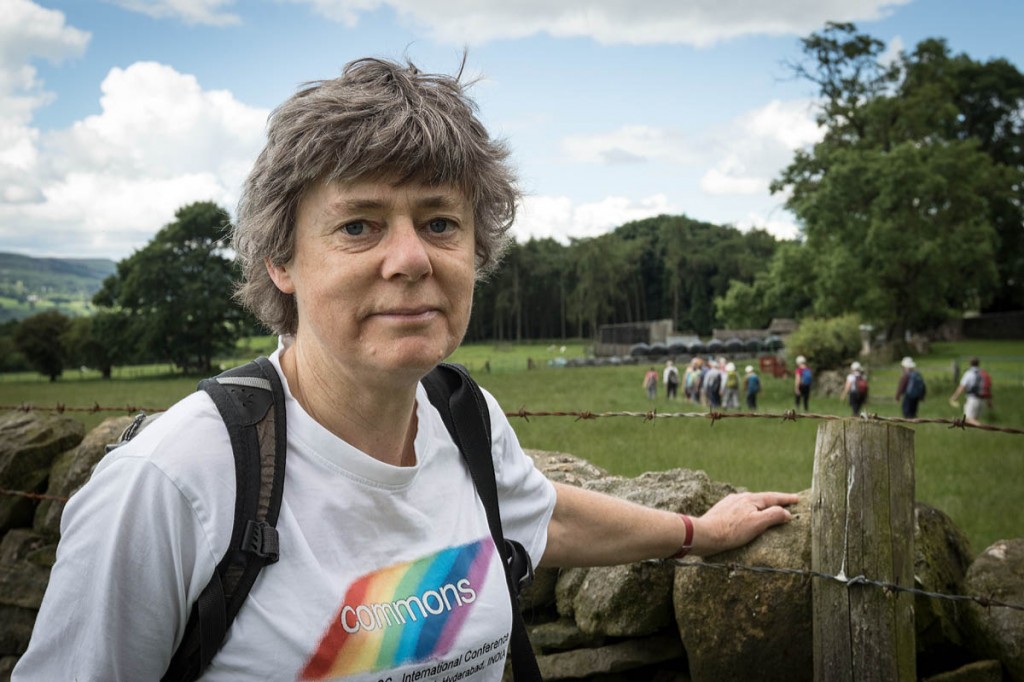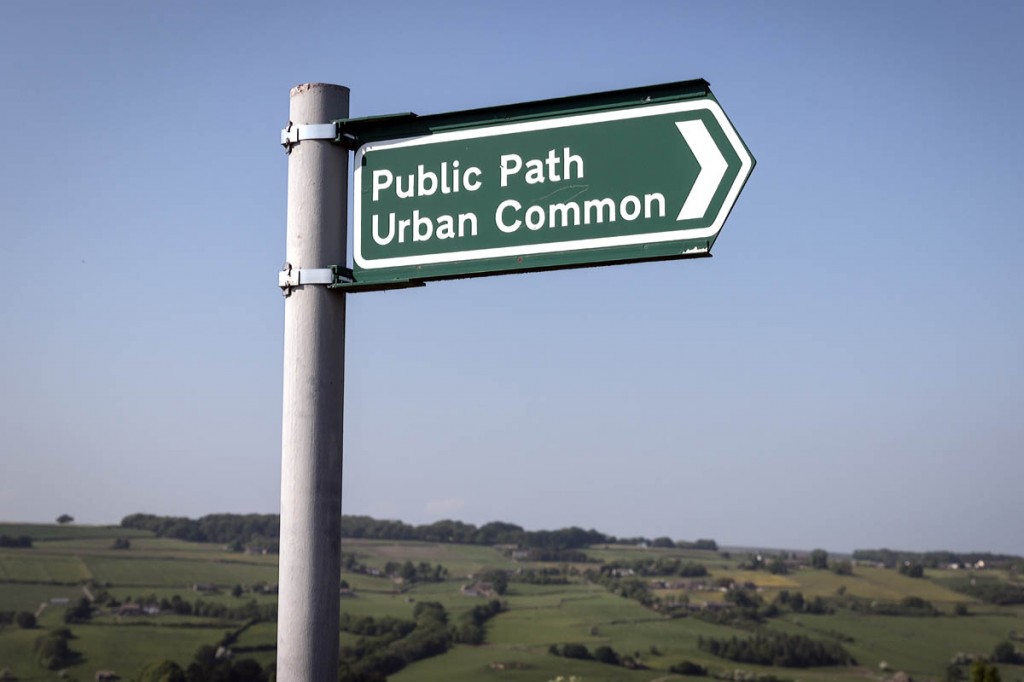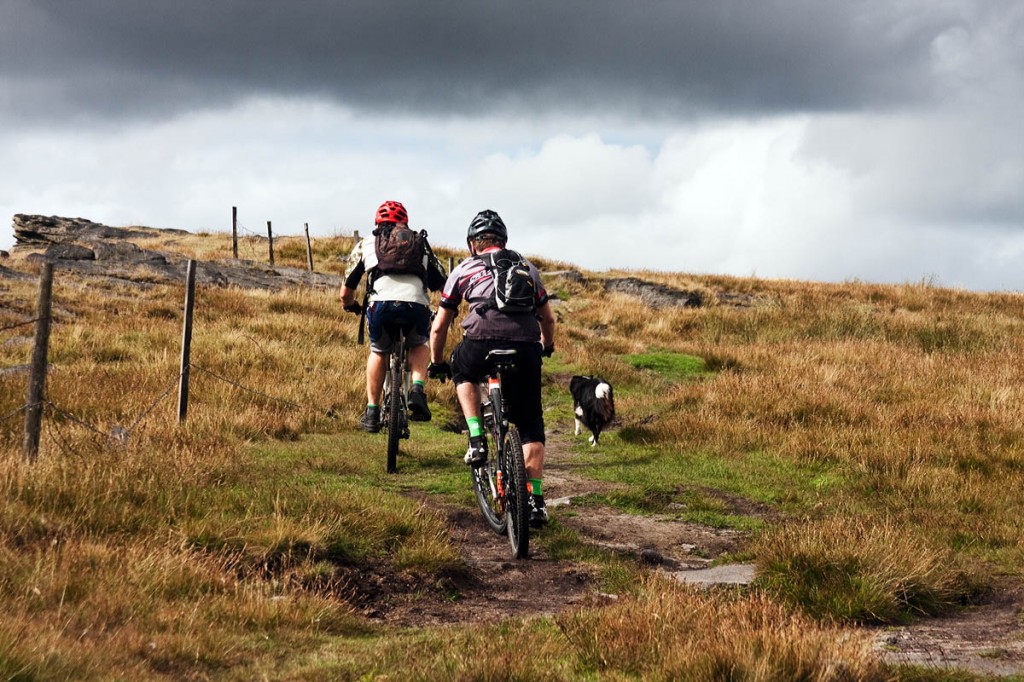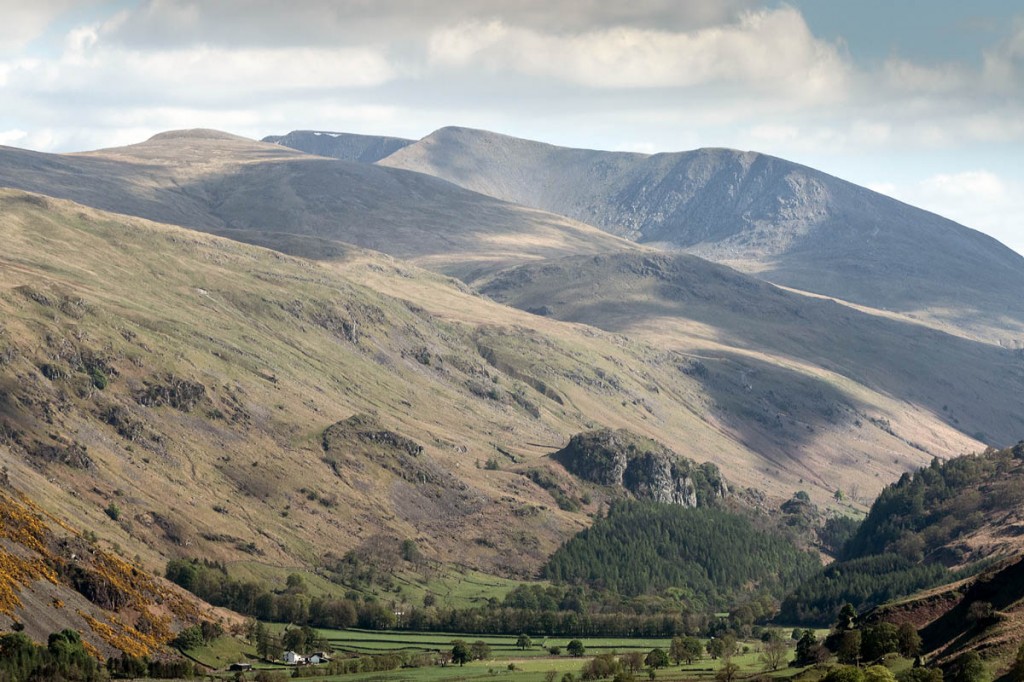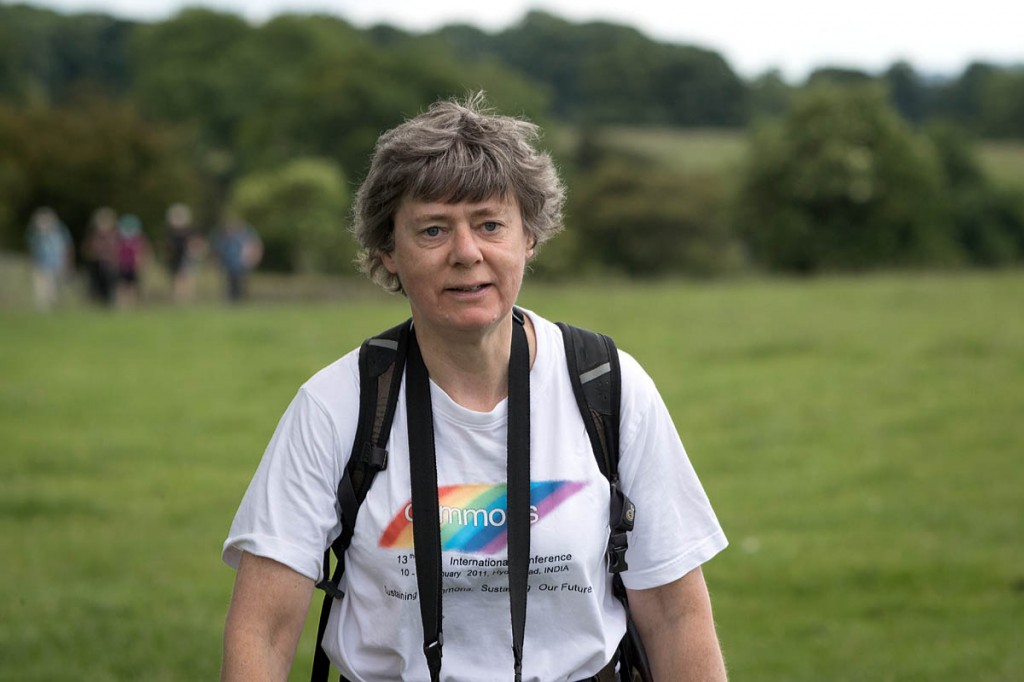One of the country’s top outdoors campaigners said the effects of the UK’s exit from the European Union are deeply worrying.
Ramblers vice-president and Open Spaces Society general secretary Kate Ashbrook said she expects the referendum result to have big consequences on the great outdoors.
Ms Ashbrook said campaigners such as her will now need to look at the implications for the countryside after the UK voted to leave the union, which is the source of many environmental laws.
She said: “I will need to learn more about how the funding works for the countryside stewardship and protection of areas. It’s European legislation in many cases and it is actually money from Europe.
“So I do think it’s likely to have a big effect on the way the money comes into the countryside. Our Government will obviously have discretion on being able to spend the money it claims it is saving and there’s no guarantee they’re going to spend it on the things we care about.
“So I think it is deeply worrying that things are going to change and we may not be able to influence them, but we’re going to have to work together with the wildlife organisations. We’ve all got to work together to get the money into the right places.
“I think maybe we had to pass some laws to make legislation such as special protection areas apply to us. The [Royal Society for the Protection of Birds] and other wildlife organisations will know much more, but it’s very, very worrying.”
Ms Ashbrook said she also had concerns about the shape of the Government in the near future. “We also don’t know if there’s going to be a reshuffle and we’re going to lose the environment minister Rory Stewart.
“That could affect things. He’s been positive about many things. National parks kept their funding. He understands about the uplands, coming from Cumbria. It would be sad to lose him but who knows what’s going to happen.”
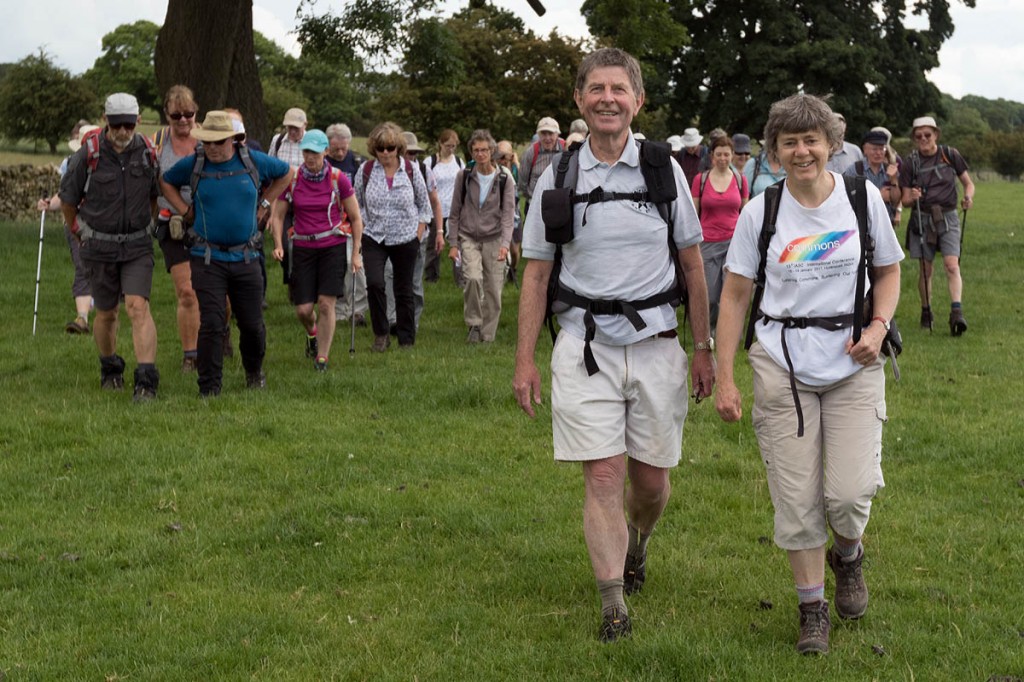
John Sparshatt and Kate Ashbrook are joined by fellow walkers inaugurating the Welcome Way near Otley. Photo: Bob Smith/grough
grough took a stroll with Kate Ashbrook when she visited the West Yorkshire town of Otley for the official opening of the Welcome Way, a long-distance walking route which has been created with the co-operation of four Walkers Are Welcome towns. She is also patron of Walkers Are Welcome.
The 45km (28-mile) route links Otley, Burley in Wharfedale, Baildon and Bingley in a route through the West and North Yorkshire countryside.
She joined Welcome Way project chair John Sparshatt and about 30 other walkers on part of the route on Saturday. Ms Ashbrook was enthusiastic about the new walking route and said she hoped there would be more similar ones in the future.
She said: “It’s fabulous, particularly as it’s produced by the co-operation of four Walkers Are Welcome towns.
“It’s a great collaboration. We’ve worked together to produce a route that not just goes through lovely countryside but takes people into the hearts of the towns as well where we hope they will spend money and demonstrate that walking is good for the local economy.
“We’ve got a number of towns in Shropshire not that far apart; they could work on something similar, and as we get more and more towns on board there are more opportunities.”
Ms Ashbrook said maintaining the network of Walkers Are Welcome towns was a big task, undertaken by volunteers.
“We’ve got over 100,” she said. “It is quite hard work because one of the things the committee, which is all volunteers, has to do is to make sure the towns are keeping up to the mark. So every year we check they are fulfilling our criteria: working on the paths, keeping public transport going, and in particular, they have a committee made up of a wide range of interests so it’s not just the town council and the local authority.
“If you’re dependent on the local authority for your Walkers Are Welcome town, that can be pretty hairy because the authority can easily pull out, or if it’s a specially funded post that’s managing it. So we’re very anxious there should be real grassroots support in running the Walkers Are Welcome towns.
“Our excellent committee goes through all the annual reports the towns produce to make sure they’re keeping up to the mark.
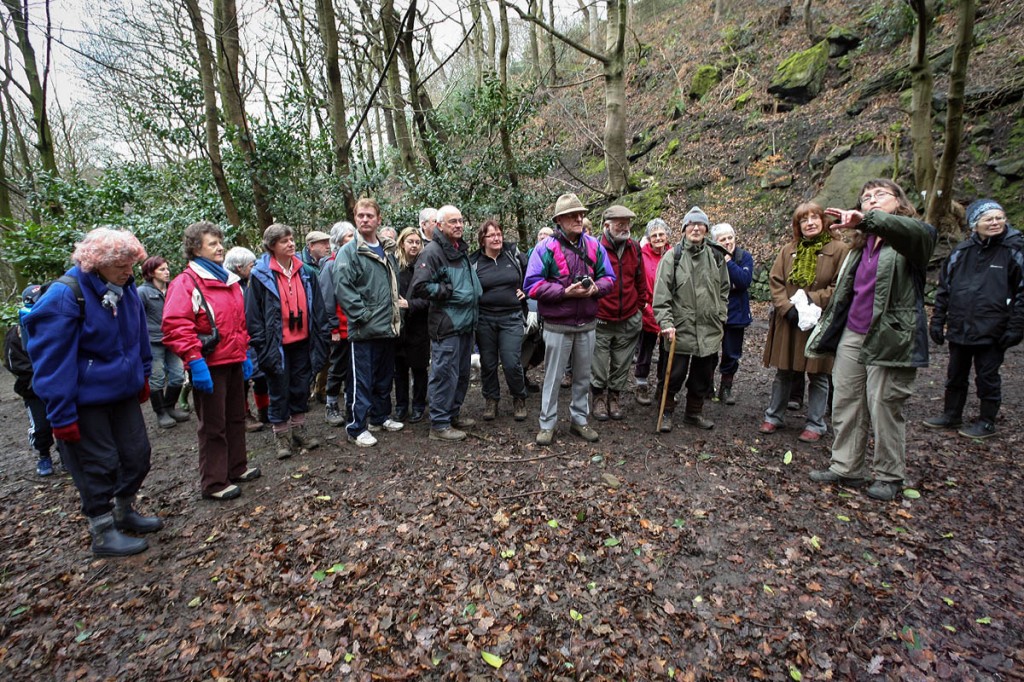
Kate Ashbrook, front third from left, was at the launch of the first Walkers Are Welcome scheme in Hebden Bridge in 2007. Photo: Bob Smith/grough
“It’s a brilliant concept, the whole idea, which was born in Hebden Bridge in 2007 with the help of Andrew Bibby.”
Ms Ashbrook, who was described by the Independent on Sunday newspaper as ‘the high-priestess of countryside access’, said she has no intention of giving up her campaigning after decades of championing outdoor causes.
“I’ll carry on. I’ve been involved in campaigning for over 30 years. It all started on Dartmoor. I’ve been with the OSS 31 years; I’ve been trustee or president of the Ramblers for 34 years; I’ve been around forever, really.
“There are so many unknowns right now, but I do think the lack of public investment in paths and open spaces is really worrying. We’re all doing our bit to help, but actually these things should be cared for out of the public purse. There is a limit to what you can do; you can’t keep going back to people.
“There’s the whole worry about funding for everything. And it goes on getting worse and worse. Of course, we don’t know what the outcomes will be following the recent referendum – what effect that’s going to have on public funding.
“So far, things are looking really bad. So I think being able to demonstrate the importance of walking for health and the economy gets greater and greater.”
Ms Ashbrook said maintaining and improving the public’s ability to access the countryside was at the heart of her campaigning.
“The Open Spaces Society tries to work on things other people don’t work on. So we are working very hard on trying to claim lost commons, which is a bit technical, but we’re just taking on a new project to enable people to research land that got left off the commons register.
“North Yorkshire is one of the areas you can do that and Cumbria and various other places including Kent and Lancashire. So we’re going to be promoting that, because if we can get land restored to the commons register, people will have access to it.
“The user groups are now working very hard together to claim paths for the definitive map before 1 January 2026 when the map closes to claims for historic paths. We’re now running training courses and trying to get people researching old routes that ought to be on the map.
“Again, it’s quite technical, but we’re running training sessions all round the country. We’re doing that with the Ramblers, the British Horse Society and Walkers Are Welcome have come on board. So we’re training people how to look at a map, try to judge what might be missing; go to the record office; look up the relevant documents and put together the case for that route being shown on the definitive map as a public highway. Because on 1 January 2026 we risk losing a whole lot of routes and we’ll never be able to get them then.”
The OSS general secretary explained the detective methods used to search out ‘lost paths’, the deadlines for registering which was outlined in the last Labour government’s Countryside and Rights of Way Act.
“You look at the Ordnance Survey map in the very first instance, for an area that interests you, and might see a path that ends at a parish boundary; or a bridleway might suddenly become a footpath. Should it be a bridleway all the way through?
“Or the ‘white roads’ are notorious. The tracks shown on the OS as white tracks, it’s not known if they’re public or not. The OS sometimes puts their ORPA [other routes with public access] symbol, but the OS doesn’t know. That’s not proof that it’s got public rights of access, so you have to look at all those and find out whether they are on the definitive map; whether they’re on the council’s list of streets which is their document of routes they accept they have to maintain, and if they’re on neither, you have to go about working out whether they should be shown there.
“That means probably going to the National Archives and looking up the enclosure award or the Finance Act for 1910. There are various other records we tell people about on the training.
“What we would like to see is a big project to get all these records, which are held in Kew – which is a long way away for many people – digitised so they are publicly available, and we don’t have to keep going back there; we can look them up on the web. And also, these old documents need to be preserved and every time you pull one out, you’re fingering it and it’s decaying. So that’s another project we’re involved in with a lot of other groups to help get that going. People are actually showing a lot of interest in it.
“It’s a bit like the revival of people looking up their family histories; what you’re doing is retrieving the history of the countryside, which is written in our path network. But if we don’t know where the paths are, we don’t know our history. So we’re discovering our history and it’s really exciting.”
Another area of work for the Henley-based organisation, Britain’s oldest national conservation society, is in registering green spaces.
“At the Open Spaces Society, we have people who ring us up and say our open space is under threat; what do we do? The problem is, if there’s planning permission on the land it’s probably now too late.
“What we say to communities is: you can register land as open land, as a village green, if you’ve evidence it has been used by local people from the area for 20 years, without being stopped and without asking permission, you can apply to register it. But you must do that now before it’s threatened with anything. And once it’s registered, it is protected from development.
“But the Government changed the law in 2013, so if it’s got any threat of planning on it, it’s too late to register it. So we say to people: look around your community now – today – at these lovely spaces you’ve been enjoying and check whether they’re protected, and if they’re not, think about getting them registered.
“There’s a whole process we help them with: gathering evidence and putting it together and sending it to your local authority which is the county or unitary council.”
Ms Ashbrook stepped down as head of the Ramblers, the biggest walkers’ charity in Britain, after four years. She is now a vice-president of the organisation. “My role as Ramblers vice-president is automatic as a past president, but I’ve also gone back as a trustee.
“I was president for four years and that was lovely, but I’d done enough and I think being a trustee is important because I can help shape the direction and ensure campaigning remains at its heart.
“It’s really important the Ramblers should be campaigning and being seen to campaign.
“The Ramblers will be publishing the results of the Big Path Watch. They’re working away on coastal access; it is very good. Amazingly, the Government has kept the money in there.
“But there is a worry about what’s going to happen with funding of national trails. Once coastal access is approved, it becomes a national trail and I know Natural England is going to be looking for other funding for national trails.
“The Ramblers did put in a proposal for running a national trails trust which I think they’ll be reviving probably.”
At a time when uncertainty is more keenly felt than at any time within memory, many outdoor fans will be thankful there is a campaigner as tireless as Kate Ashbrook fighting their corner. Any thoughts of stepping back from her battles? “No way will I give up,” she said. “There’s so much to do.”
